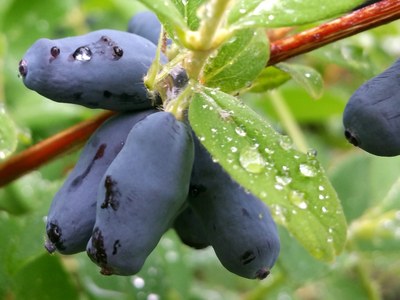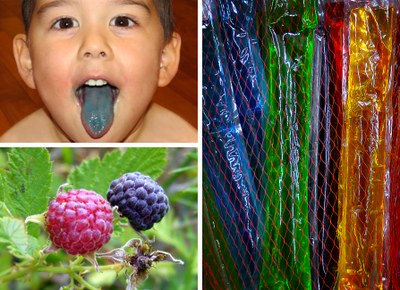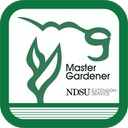Documents
"Blueberries" for North Dakota
 Blueberries are delicious—but they are almost impossible to grow in North Dakota.
Blueberries are delicious—but they are almost impossible to grow in North Dakota.
We don’t have the proper soil to grow blueberries. Blueberries demand a very acidic soil (pH 4.5–5.5). This is rare in our state. Most of us have a prairie soil that is neutral to slightly alkaline (pH 7.0–8.5). Blueberries will starve in these soils.
Our winters are too harsh to grow blueberries. In the northern regions of our state (Zone 3), it is too cold to grow blueberries. The plants will freeze to death.
In the warmer regions (Zone 4), the plants can die unless they are blanketed with snow. Snow is unpredictable in our state, to say the least.
Although it is very tough to grow real blueberries here, we can grow other fruits that look and taste like blueberries.
Canadian haskaps (Lonicera caerula) are very easy to grow. These blue-fruited honeysuckles thrive in our prairie soils. Millions of haskaps are planted in the Canadian prairie provinces. The plants are hardy to –40°F. The spring-flowering shrubs grow up to 4 feet tall and require little care.
Haskaps are delicious. Their taste has been likened to a blueberry with essences of raspberry, black currant and/or blackberry. Its texture is like a blueberry. The skin is thin and the seeds are tiny and edible. The berries are eaten fresh, baked into pies, made into jams, or frozen and sprinkled onto ice cream.
Haskaps are harvested in late June/early July. You can expect two pounds of berries per bush after three years, and sometimes double that yield as the plant matures. Haskap cultivars from the University of Saskatchewan are recommended for their superior flavor. ‘Borealis’ has juicy fruits and is a great choice for gardeners. Sprinkle a few ‘Berry Blue’ or ‘Cinderella’ plants in the row for pollination.
Birds love haskaps, too. Be prepared to put netting over the shrubs when berries show blue color.
Forget about growing blueberries and stop challenging the powers of Mother Nature. Grow haskaps instead. Cooperate with Mother Nature and you will be successful. Go to University of Saskatchewan and NDSU Hardy Fruits Project websites for more information.
Written by Tom Kalb, Extension Horticulturist, North Dakota State University. The photo was made available under a Creative Commons license specified by the photographer: karen_hine. For questions on this webpage, please contact Tom Kalb.
What is a blue raspberry?
 How was your Halloween? Our Halloween was great—the kids had a fun time and collected lots of candy from our neighbors. Then I saw something weird—my boy had a blue tongue!
How was your Halloween? Our Halloween was great—the kids had a fun time and collected lots of candy from our neighbors. Then I saw something weird—my boy had a blue tongue!
His blue tongue was caused by blue raspberry candy. There are lots of blue raspberry snacks and juices on the market now.
Many of us are familiar with red, purple and even yellow raspberries, but what is a blue raspberry?
The blue raspberry originated in a laboratory, not on a farm. It started when makers of ice pops had more red flavors (cherry, strawberry, raspberry and watermelon) than shades of red dye. Kids who wanted a cherry ice pop, for example, could not figure out which red ice pop to select.
Raspberry pops originally used a dark red dye (FD&C Red No. 2) but it was later banned by the FDA as a possible carcinogen. The ice pop makers found Brilliant Blue dye (FD& C Blue No. 1) sitting on the laboratory shelves and the blue raspberry was created—along with blue tongues.
Its flavor mimics the flavor of blackcap raspberry Rubus leucodermis, a wild berry most of us have never seen or eaten (bottom left photo).
There is no such thing in nature as a blue raspberry. Even if you find a blue raspberry product with natural flavors it probably doesn’t have any actual raspberry flavor. Less expensive juices such as apple and orange are more commonly used in these products.
Source: Matt Soniak. What the heck is blue raspberry? http://mentalfloss.com/article/29273/what-heck-blue-raspberry. Accessed online on November 10, 2015, Photos courtesy of Tom Kalb, arbyreed and Zoya Akulova.
Ten Steps to Growing Apples in Northern North Dakota
 apple-north.pdf
—
PDF document,
111 KB (114275 bytes)
apple-north.pdf
—
PDF document,
111 KB (114275 bytes)
Ten Steps to Growing Apples in North Dakota
 Growing Apples in North Dakota.pdf
—
PDF document,
110 KB (112806 bytes)
Growing Apples in North Dakota.pdf
—
PDF document,
110 KB (112806 bytes)





